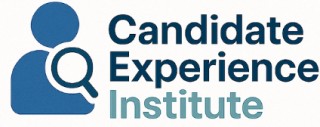Defining Adverse Impact in Recruitment
Unpacking the Core of Adverse Impact in Recruitment Processes
In the realm of recruitment and employment, one term that's frequently encountered but often misunderstood is "adverse impact." This concept revolves around practices that may appear neutral but result in a negative impact on individuals from certain protected groups during hiring processes. At its core, adverse impact indicates systematic discrimination that isn't overtly intentional yet carries significant implications for affected job candidates.
According to the Uniform Guidelines on Employee Selection Procedures, adverse impact is identified through statistical evidence. It's often measured using the "four-fifths rule"—a guideline suggesting that the selection rate for any protected group should be at least 80% of the rate for the group with the highest selection rate. Falling short of this benchmark may indicate potential adverse impact and requires further scrutiny.
The importance of recognizing adverse impact lies in its potential to lead to unintentional discrimination based on race, sex, or other protected categories, which runs contrary to the protections afforded by Title VII of the Civil Rights Act. It's vital for organizations to engage in impact analysis to uncover patterns of disparate impact or disparate treatment that may arise from their recruitment and selection procedures.
Consider an example where pre-employment tests are involved. If a particular group consistently scores lower and is subsequently hired at a lower rate compared to others, it merits a closer examination of whether these selection procedures are equitable. While not every instance of adverse impact is illegal, failing to address it can harm the candidate experience and lead to legal consequences.
By understanding and acknowledging these nuances in hiring practices, employers can craft more inclusive job descriptions and implement equitable selection processes. This not only benefits candidates but enhances the organization's brand and employee selection effectiveness. For further insights on refining recruitment strategies, consider visiting this comprehensive
guide on enhancing candidate experience through interim accounting adjustments.
Identifying Signs of Adverse Impact
Recognizing Traces of Adverse Impact in Recruitment
One of the significant challenges in recruitment is identifying signs of adverse impact, where employment practices yield disparate outcomes for different groups. This can happen when a
selection procedure unintentionally favors a certain group, resulting in a lower hire rate for another, perhaps protected group. The fifths rule, commonly used in human resources, posits that when the selection rate for a group is less than 80% of the highest rate, evidence adverse is assumed.
A deeper analysis should be applied to job descriptions and pre-employment tests to ensure they are based solely on job analysis and not inadvertently leading to selection discrimination. Disparate impact can emerge when criteria or processes used in hiring unintentionally disadvantage a group, despite uniform guidelines being in place to prevent such disparities.
Further investigation into the hiring process and scrutinizing employment data through impact analysis can reveal whether certain employment practices disproportionately affect protected groups. A routine examination can help discern whether disparate treatment is occurring, ensuring that employee selection procedures are unbiased and align with Title VII requirements.
For those seeking comprehensive insights into enhancing candidate experience while navigating these challenges, consider reading about the insights from a talent management firm's talent coordinator.
The Role of Bias in Adverse Impact
The Underlying Influence of Bias in Adverse Impact
Bias is a critical element driving the prevalence of adverse impact within recruitment processes. It manifests subtly and pervasively, often underpinning instances where protected groups experience disparate impacts without overtly discriminatory practices. Bias can emerge at multiple stages, from job descriptions and pre-employment assessments to interviews and selection criteria.
Uncovering the bias requires a thorough impact analysis, aimed at identifying disparities in selection rates among various demographic groups. When a bias is present, certain groups may face lower employment opportunities despite equivalent qualifications. This skewed outcome is a red flag, suggesting that bias, inadvertently integrated, affects the selection procedures.
Corporations must regularly audit their employee selection practices to identify evidence of adverse impact. One method is applying the fifths rule, which can highlight selection rate disparities between groups. Such practices ensure that recruitment processes abide by Title VII and other uniform guidelines intended to prevent discrimination based on race, gender, or any other protected characteristic.
Discrimination based on bias can be both explicit, referred to as disparate treatment, or implicit, known as disparate impact. In either scenario, it is essential for companies to initiate corrective measures and even consider implementing bias training for employees involved in the hiring process. This helps to address subconscious prejudices, thereby fostering a fairer environment for all candidates. Understanding these nuances is vital for reducing bias and enhancing overall candidate experience, helping not only to adhere to legal standards but also to ensure equitable employment outcomes across the board.
Strategies to Mitigate Adverse Impact
Effective Approaches in Reducing Adverse Impact
Addressing the adverse impact within your hiring processes requires a multifaceted approach to ensure fair and equitable opportunities for all candidates. By implementing strategic changes, companies can better align with the principles of equal employment opportunity, ultimately fostering a more inclusive environment.
One effective measure is utilizing a thorough
job analysis to develop precise job descriptions that accurately reflect the essential functions and qualifications required for the role. Ensuring clarity in these documents helps prevent potential discrimination based on misinterpretation or bias.
Enhancing selection procedures is another vital practice. Conduct a comprehensive
impact analysis to verify that your methodologies do not inadvertently disadvantage a protected group. For example, the
fifths rule can be applied to determine if selection rates are disproportionally affecting any particular group. By analyzing disparate impact evidence, you can adjust employment practices accordingly.
Incorporating uniform guidelines into the selection process helps mitigate risks of
disparate treatment. This involves standardizing interviews and tests to ensure they are fair, valid, and reliable for all candidates, reducing the likelihood of potential discrimination based on subjective criteria.
Implement training programs for employees and hiring managers to raise awareness about biases and teach skills that promote objective evaluation of candidates. Encouraging
bias training can lead to more equitable practices and cohesive team dynamics.
Finally, regularly reviewing and updating recruitment processes is crucial to maintaining legal compliance and avoiding Title VII implications. Continuous monitoring and adjustment safeguard against discriminatory practices evolving unconsciously within the organization.
By proactively addressing these areas, employers not only diminish instances of adverse impact but also enhance the overall candidate experience, leading to a more diverse and inclusive workforce.
Legal Implications of Adverse Impact
Legal Consequences and Frameworks to Consider
Navigating the intricacies of adverse impact in recruitment inherently involves understanding its legal implications. Adverse impact often points to potential discrimination within employment practices, raising significant concerns under employment law.
A cornerstone in this dialogue is Title VII of the Civil Rights Act, which prohibits employment discrimination based on race, color, religion, sex, or national origin. This legislation provides a foundation for analyzing disparate impacts in job selection rates and employee selection procedures. Employers must ensure that their hiring’s disparate treatment and selection processes are devoid of discriminatory practices to remain compliant with Title VII.
Moreover, the "four-fifths rule" provides a statistical yardstick to determine whether adverse impact exists. If the selection rate for a protected group is less than four-fifths (or 80%) of the rate for the group with the highest selection rate, evidence of disparate impact may be present. Employers are encouraged to use this rule as a preliminary analysis tool to detect any hidden biases in their processes.
In addition, organizations must adhere to the uniform guidelines on employee selection procedures. These guidelines offer comprehensive directions on legitimizing selection procedures, ensuring they are valid and reliable, and fundamentally non-discriminatory. In adhering to these guidelines, companies can avoid evidence of adverse impact and safeguard against potential litigation.
Adhering to legal requirements not only protects organizations from litigation but also aligns their recruitment practices with ethical standards, thereby cultivating a fairer candidate experience. Comprehensive job analyses and crafting clear job descriptions based on role requirements can further support a legally compliant and equitable hiring process.
In the realm of employment law, maintaining vigilance over potential adverse impacts is a continuous necessity. Ensuring every step of the recruitment journey, from pre-employment processes to hiring decisions, upholds legal standards is paramount in fostering an inclusive and fair employment environment.
Case Studies: Overcoming Adverse Impact
Practical Lessons from Overcoming Inequality in Hiring
Navigating the complexities of adverse impact requires real-world applications and testimonies from companies successfully addressing this challenge. Several organizations have implemented strategies that not only bring fairness to the hiring process but also enhance the overall candidate experience.
One exemplary practice involved an in-depth job analysis to ensure that job descriptions and selection procedures reflect the true requirements and do not inadvertently disadvantage any protected group. By revising these descriptions, companies can eliminate biased language and rely on uniform guidelines, which help in setting clear, nondiscriminatory expectations for candidates. This practice impacts the selection rate positively and ensures that employee selection is rooted in merit rather than discriminatory whims.
Focusing on transparency, some organizations have utilized evidence-based impact analysis to identify and rectify disparities in their recruitment process. For instance, a thorough review of their hiring process might uncover a disparate impact against certain groups. Companies adopting the four-fifths rule for selection rates can monitor and measure any significant adverse impacts and make necessary adjustments.
Another successful approach has been the integration of more objective pre-employment assessments, which are designed to measure candidate capabilities rather than rely on subjective factors. This shift decreases the chances of disparate treatment and enhances the validity of the selection procedures, promoting equal opportunities for all job seekers.
In combating discrimination based on biases within recruitment practices, these examples highlight the significance of a commitment to ongoing training and education. Employee training programs are essential for reinforcing awareness of title VII and other legal protections, ultimately fostering a culture of inclusion.
By demonstrating a dedication to fair employment practices, these organizations serve as benchmarks for others facing adverse impacts in their hiring strategies. Continuing to adapt and evolve these practices not only contributes to equitable outcomes but also builds a more inclusive workforce environment.














